PrestaShop WhatsApp Business Order Notifications: Notify or alert your customers of time-sensitive information, such...
Dropshipping Guide (Facebook Ad Redirect)
As you can see, you can retarget people who viewed your product page or added the product to their cart and customize their time frame. There are even options for upselling or cross-selling!
While these features look pretty cool and may work great for large catalog stores, the downside is that they are less customizable.
For example, there's no option to retarget people who have initiated the checkout process, and your ad descriptions themselves won't be as relevant as they could be if they were generated automatically.
On the one hand, this is a great time saver, and you will be sure that the right audience can see the product that is most relevant to them!
2. Consider the type of product you're selling when setting your custom audience time frame
Whether you set up your ads automatically or manually, you'll have to set a time frame for both.
But what is a reasonable time frame to choose?
Well, one strategy to consider in an appropriate time frame is to think about the type of product you are selling.
For example, for low-ticket products that are purchased often, it is often best to set the time frame to 30 days or less. For these products, people do not need much time to think about whether they want them or not
Beginners
Example of a low-ticket dropshipping product (find out more here)
However, for high ticket products that tends
For people to think about it more before making a purchase, you can set a period of 180 days or even 365 days.
For example, if you're selling a $3,000 queen-sized bed, you can't expect someone to buy it after seeing just one ad on Facebook, right?
Example of a high-ticket dropshipping product (find out more here)
3. Make sure custom audiences don't overlap
Remember the ecommerce purchasing path we showed you at the beginning?
If not, here it is again:
It's common to create a custom audience for part of this conversion funnel for your retargeting campaigns.
But when you do this and create multiple custom audiences
Make sure they do not overlap.
For example, if you're creating a retargeting campaign for people who have added a product to their carts, make sure to exclude those who have also initiated the checkout process:
Are you looking for a way to increase your store sales?
When you run retargeting campaigns with overlapping audiences, your ads will be less relevant, and it may be unclear which audience gets the best results!
Does Facebook Ad Retargeting Still Work in 2023? (iOS 14 update)
Unfortunately, retargeting Facebook ads won't always be as effective as they once were.
In September 2020, Apple released a new update called iOS 14 that allowed users to opt out of app tracking.
Dropshipping?
If so, retargeting Facebook ads is a highly effective strategy that can help you increase conversions, build brand loyalty, and ultimately grow your business.
source
Since then, Facebook can no longer track iPhone users once they leave the Facebook app.
The result is that the intended audiences for your retargeting campaigns become smaller, making the campaigns less effective.
However, as with any challenge, there is a solution. So, here are some things you can try to reduce the impact of the iOS 14 update on you:
Try focusing more on Meta audience sources, such as people who visited your Facebook page or Instagram account.
Make your custom audience less specific. For example, target all website visitors rather than just adding to carts.
Increase the time frame of your custom audiences to increase their size.
Focus on building an email list and using it for retargeting.
In this beginner's guide, we'll delve into the topic of replay
Target Facebook ads.
Read on to learn everything you need to know about setting up a successful Facebook Ad Retargeting campaign!
What is Facebook Ad Retargeting?
Any dropshipping store owner knows that one of the most frustrating things is seeing customers add items to their cart only to leave without completing their purchase.
But the thing is, this happens all the time!
For every additional step a visitor must take to complete their purchase, there is an opportunity to rethink themselves and leave your store!
In fact, the average conversion rate for an online store is around 2%. This means that out of every 100 visitors, only 2 will buy something, and 98 will leave!
But what if there was a way to improve your conversion rate, and bring those customers back?
With Facebook Ads, you can create ads specifically targeted to people who have already engaged with your store.
Retargeting these people is possible because Facebook tracks everything. It even monitors people's behavior after clicking on your ad!
For example, Facebook tracks visit time as well as the number of additions to shopping carts, initiation of checkouts, and newsletter sign-ups
Product views, purchases, and more.
You can use all this data to your advantage with retargeting. For example, you can create ads specifically tailored to people who have added your product to their cart but haven't initiated a checkout or purchase yet!
Ads in retargeting campaigns can be highly personalized, which helps increase the likelihood of conversion. This is an example
Additionally, you can customize your retargeting campaigns to show specific products or pages someone has viewed, making them more relevant.
How do you set up a Facebook Ads retargeting campaign? (5 steps)
Are you excited to set up your own Facebook Ads retargeting campaign?
But first, you should know that Facebook ad retargeting is not for everyone.
If you're just starting out running your store and don't have any sales yet, retargeting may not be very practical for you simply because you don't have a lot of data yet!
So, here's what we recommend before setting up a retargeting campaign:
Required: You have set up your Meta Pixel.
Recommended for retargeting ad engagement: At least 10,000 views on your Facebook video ad in the last 60 days.
Recommended for content retargeting: at least
2000 website visits in the last 60 days.
Recommended for Add to Cart redirection: At least 1,000 added to carts in the last 90 days.
Recommended to start checkout redirection: At least 1000 withdrawals in the last 90 days
Essentially, when you retarget, you will target a group of people in a specific section of the ecommerce purchasing funnel. However, if there are only 20 people in that group, retargeting ads will not be effective.
When targeting Facebook ads, the minimum audience size is 100 people, but
Facebook recommends a minimum of 1,000 people
Tip: If you don't have the recommended data yet, it's best to focus on your general Facebook ads rather than retargeting ads.
Ready to start creating retargeting campaigns now?
1. Set up a custom audience in Ads Manager
The first step in setting up a retargeting campaign is to create the audiences you want to (re)target
You can do this from the Audience section of Ads Manager.
Once there, you'll see a blue button at the top left of the screen called “Create Audience.”
Click this button, and you'll be able to choose a custom audience source:

A custom audience is a group of users who took specific actions on your website or Facebook page.
Here are some common custom audiences to retarget, sorted from most to least reachable (remember, the more data, the better your retargeting ads perform):
Source: Video (Facebook video ad views). You can retarget people based on how long they spent watching your video. For example, people who
They watched the video for at least ten seconds, or at least 25% of the video.
Source: Website (website visitors). Here, you can also choose to include people who visited your website for a specific period or only those who viewed a specific page (product).
Source: Website (add to shopping carts). You can identify everyone who has added a product to their shopping carts.
Source: Website (starting payments). You can identify everyone who initiated the checkout process in your store.
Source: Customer list. For example, in Shopify, you have a list of customers that includes their names, phone numbers, email addresses, etc. Facebook can match this information to Facebook profiles and retarget them
Creating a custom audience is very simple. Simply choose one of the sources above, set a retention period, give your audience a name, and click the Create Audience button.
2. Create a new ad campaign in Ads Manager
Once you've set up your custom audience, it's time to create a retargeting ad campaign
First, head to the Campaigns section of Ads Manager.
Next, it's time to follow the standard steps to create a new Facebook ad campaign.
Considering that you likely have some data on your Meta Pixel already, we'll go through this process quickly.
So, start by clicking the green “Create” button, select “Sales” as your campaign goal, and then give the campaign the appropriate name.
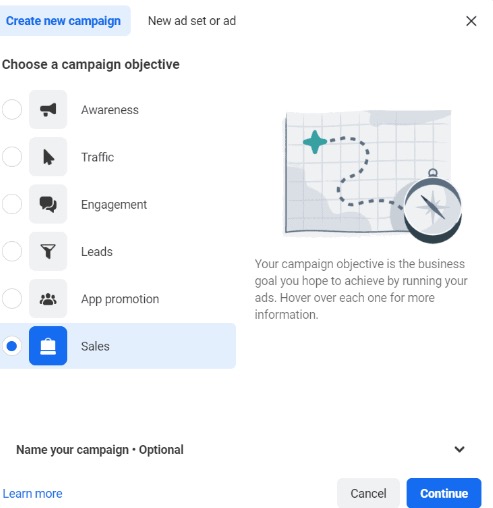
After you click Continue, you can choose a Feature + Shopping campaign or a manual sales campaign.
Shopping+ is a relatively new feature in Facebook Ads. It's designed as an effort to improve your ad performance by giving more control to Meta's machine learning algorithm.
Basically, Advantage+ Shopping can be a good alternative to “traditional” Facebook retargeting campaigns.
However, when you choose Advantage + shopping, you won't be able to select the custom audience(s) you just created, so it's best to create a manual sales campaign for now.

After that, continue setting up your ad the way you are used to.
For budget, we recommend setting it at the campaign level. It's difficult to determine the exact budget you should set, and you should always do some testing with it.
The more data you have, the more you can adjust your budget. We typically recommend placing it at 5-10% of your total Facebook advertising budget.
3. Choose your target audience
Continuing at the ad set level for your campaign, set the conversion location to 'Website' and the conversion event to 'Purchase'.
Once you get to the Audience section, select the custom audience you created in the first step

You will also see an option called “Custom Audiences Feature.”
This is the rebranded version of the old “Expand detailed targeting” option, which essentially gave Facebook permission to target people outside of your custom audience.
Since Meta algorithms have improved significantly over the past few years, this can be a good option to improve the performance of your ads.
However, for a retargeting campaign, we recommend turning it off.
The retargeting ads you create will be specific to your custom audience and won't make much sense to others, so why target others with them
For the other settings in the Audience section, make your targeting as broad as possible so you can target as many people in your custom audience as possible.
Set locations for all countries of your target audience. (Check out the best countries you can target as a dropshipper in this article)
Set the age range to 18 - 65+.
Sselect "All Genders".
Don't include demographics, interests, or behaviors in the detailed targeting section.
Set languages to "All".
The next option determines the placements of your ad(s).
For a retargeting campaign, we'll choose Advantage + Placements because it increases the likelihood that your ads will reach your custom audience. (Sometimes, with
Small custom audience, Meta may have issues serving ads on Facebook only.)
4. Design and launch your ad
Once you've chosen your target audience, you can design and launch your ad by following the instructions in Ads Manager.
As always, you can choose your ad format, body text, headline, and call to action.
While creating the ad, keep the retargeting goal in mind.
You want to bring your target audience back to your website!
The best way to do this is to create an ad that attracts attention (Step 1) and gives a reason to return to your store (Step 2).
Here's how to create a retargeting ad that grabs people's attention:
Call people to their actions. Don't use your usual ad description. Instead, tell them what they did. For example: “Hey! I left something in your shopping cart!”
Show the product he was interested in. To maximize your chances of grabbing people's attention, use a video or image that's different from what they've seen so far.
Here are some ways to give people a reason to come back to your store:
Make them an offer. The most effective way to get someone to click on a retargeting ad is to give them a discount code!
Add a certificate. Often times, people will look for a review of a product before purchasing it. Adding a testimonial to your retargeting ad can remind your audience that others love your product!
Remind them of your terms. For example, you can indicate that you offer free shipping, free 30-day returns, and accept PayPal. Facebook information labels are an excellent feature for this
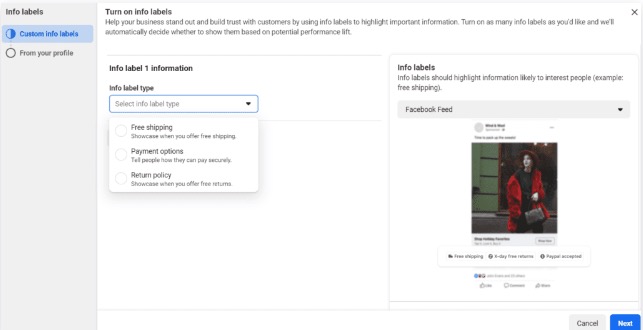
You can activate it from the ad level of your campaign.
Here are some great examples to give you some inspiration for creating your own retargeting ad.
The first is Madewell, which reminds visitors of their free shipping and returns:
Next up is REI, with a clever language ad that's sure to attract attention:
And finally Everlane, which cleverly offers a small discount code:
When you're ready to launch your ad, click the Publish button to make it happen!
5. Monitor metrics and adjust the campaign accordingly
After launching your retargeting campaign, it's important to remember that you're not finished yet.
Running great Facebook ads is an iterative process that requires constant adjustments.
So, once you launch your campaign, there are a few things you should keep an eye on.
The first is the frequency scale. This metric shows how many times people have seen your ad on average in a given time. It can indicate whether you are over-exposing yourself to ads or not. Or in other words, if your budget is too high or too low.
If you see that the frequency is less than one, you can try increasing the budget to reach more of your audience.
However, if you see that the frequency is high (eg
, higher than four), then you can reduce your budget a little to avoid “wasting” it.
Setting your retargeting budget too high is one of the quickest ways to burn out your Facebook ads

Next, if you select Feature + Placements while setting up your ad, it can be helpful to segment metrics based on its placement.
This way, you can check if your conversions are coming from a specific placement, and if so, you can adjust your ad placements accordingly!
You can analyze the performance of your ads by placement by going to Segmentation -> By Delivery -> Placement.
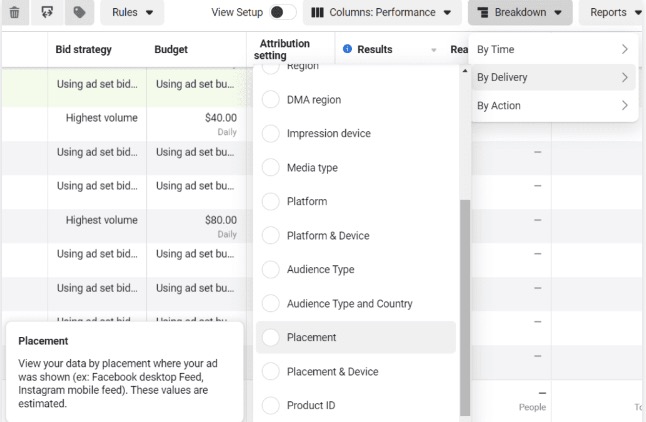
Last but not least, remember to keep a close eye on your return on ad spend (ROAS). This is one of the most important Facebook advertising metrics, as it basically tells you how much revenue you get for every dollar invested in ads.
And remember, retargeting campaigns are often seen as having the highest ROAS of any type of Facebook ad, but that's only the case if you can handle your budget carefully!
3 Tips for Creating More Effective Retargeting Ads for Your Dropshipping Store
Here are three of our top tips to make your Facebook Ads retargeting campaign more effective:
1. Make sure your ads are retargeting
Relevant to the audience
The most effective retargeting campaigns display ads that are relevant and interesting to targeted users. Therefore, make sure that your ads match the interests and needs of your target audience.
For example, if someone is shopping for a cat toy at a dropshipping pet store, targeting them with a dog toy wouldn't be very effective.
Therefore, always try to show your target audience the product they have interacted with the most.
This is not difficult if you have a single product or a small specialty store.
But how do you deal with this if you have dozens or
Hundreds of products in your catalog?
In this case, it may be better to use a Feature+ shopping campaign (instead of a manual sales campaign).
Along with Advantage+ Catalog Ads (formerly called Dynamic Ads), Meta has created a feature that lets you automatically create retargeting ads
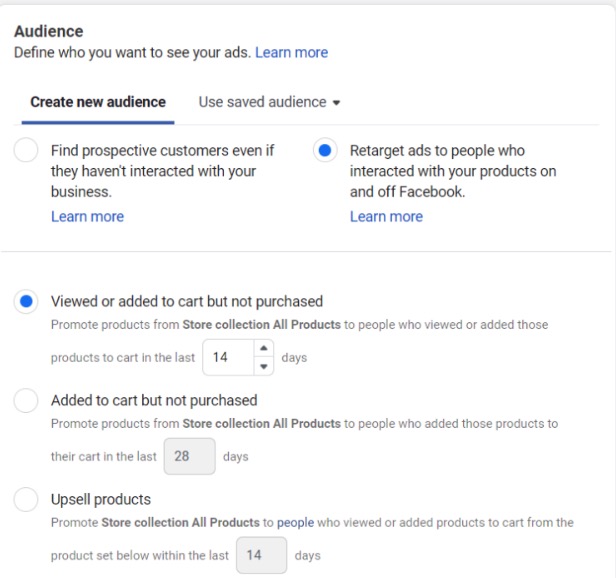

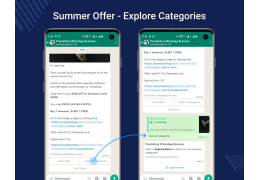


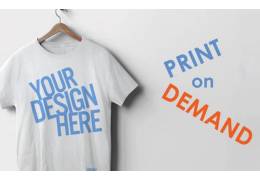


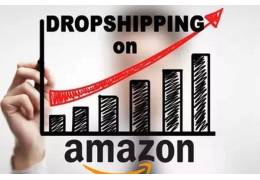

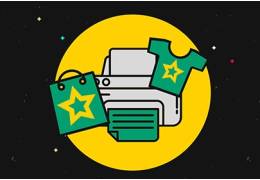



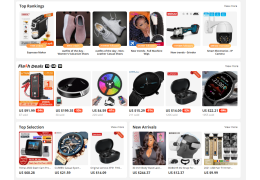



Leave a comment